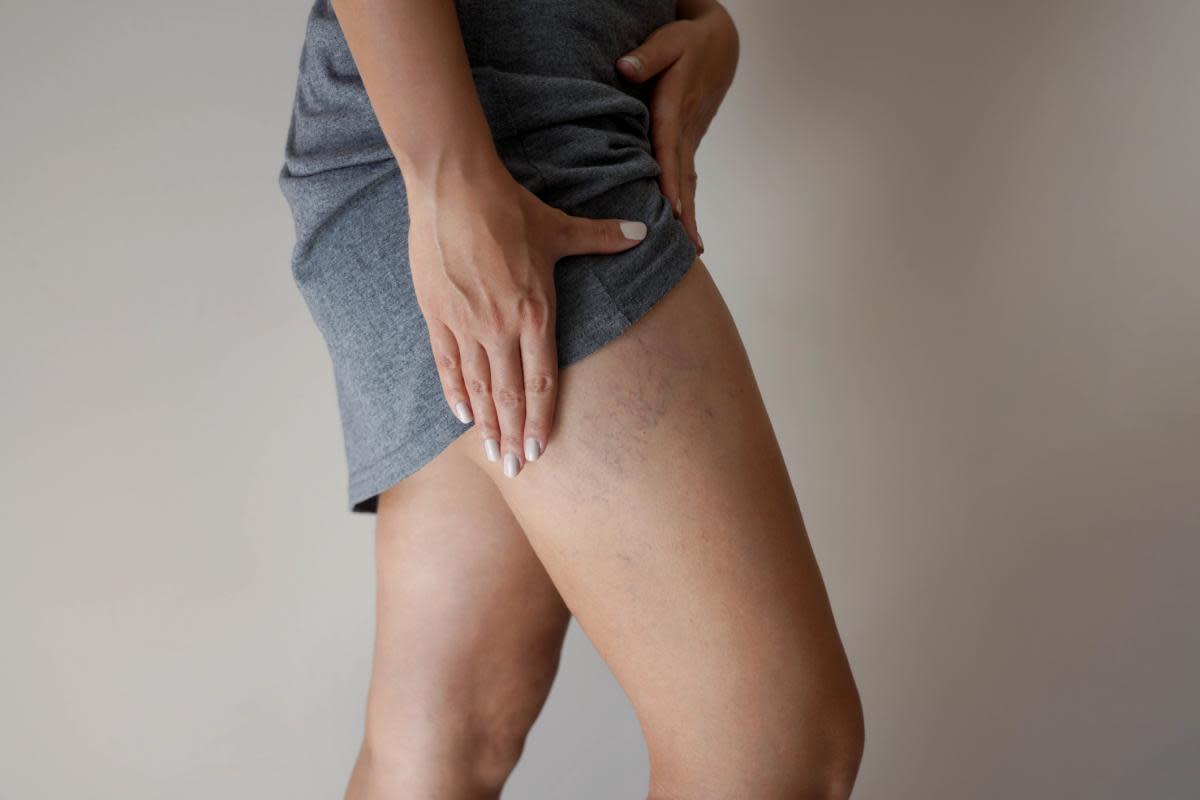5 'warning signs' that are 'crucial' to identify varicose veins early on

A vein expert has warned over the five common signs of varicose veins - here's everything you need to know.
Approximately 20% of people will experience varicose veins at some point in their lives, according to the National Library of Medicine.
The relatively common condition involves a person's veins becoming swollen and enlarged - particularly on the legs and feet.
"Identifying early warning signs and taking proactive steps can be crucial in managing this condition," according to the Medical Director of Veincentre, Dr Mark Bratby.
Hot weather, which we are likely to see over the coming months, can exacerbate varicose veins since they can increase blood pooling and vein dilation.
With this in mind, Dr Bratby has shared his expert advice on the subtle signs to look out for and when you should consider daily compression sock use.
"Varicose veins can often start as a minor issue but, if left unchecked, they can lead to more serious complications such as skin ulcers or deep vein thrombosis, " according to the vein expert.
He continued: "Early intervention with compression socks can help to manage symptoms and improve overall leg health."
What are the symptoms of varicose veins?
Persistent leg fatigue
Experiencing leg fatigue that persists throughout the day is one of the early indicators of poor blood circulation, according to Dr Bratby.
He continued: "If you often find your legs feeling heavy or tired, especially after long periods of standing or sitting, it could be a sign that your veins are struggling to pump blood efficiently."
Swelling in the lower legs and ankles
Swelling, particularly in the lower legs and ankles, is another key sign.
"When the veins are not functioning properly, fluid can leak into the surrounding tissues, causing swelling, Dr Bratby said.
"Wearing compression socks can help reduce this swelling by encouraging blood flow back towards the heart."
Discomfort or pain
Leg discomfort or pain is often overlooked but can be an early symptom of varicose veins.
"Many people dismiss aching or throbbing pain in their legs, attributing it to other factors like exercise or long workdays.
"However, persistent pain can be an indicator that your veins are under strain, Dr Bratby advised.
Dr Bratby has shared his expert advice on the subtle signs to look out for and when you should consider daily compression sock use. ( Getty Images) (Image: Getty Images)
"Compression socks can alleviate some of this discomfort by supporting your veins and improving circulation."
Visible vein abnormalities
"Noticeable changes in the appearance of your veins, such as bulging or darkening, should not be ignored," Dr Bratby warned.
"These visible abnormalities often suggest that your veins are working overtime to circulate blood.
"Daily compression wear can help manage these changes by reducing pressure on the veins."
Itching and skin changes
Itching and changes in the skin around the veins, such as dryness or discolouration, are subtle signs that should prompt action.
"These symptoms can indicate that blood is pooling in the veins, leading to inflammation and skin changes," Dr Bratby said.
"Compression socks can improve blood flow and help maintain healthy skin."
When should I go to a GP for varicose veins?
If you're not in pain or discomfort, it's unlikely that you'll need to visit a GP.
It's rare for varicose veins to be considered serious but you should book an appointment if:
your varicose veins are causing you pain or discomfort
the skin over your veins is sore and irritated
the aching in your legs is causing irritation at night and disturbing your sleep
For a full breakdown of symptoms, causes and treatment, visit the NHS website.
How to manage and treat varicose veins
Incorporating compression socks into your daily routine is a simple and effective way to manage symptoms and prevent further complications.
"Compression socks apply gentle pressure to your legs, supporting the veins and promoting better circulation, Dr Bratby said.
"They are particularly beneficial for those who spend long hours on their feet."
However, while helpful, compression socks are not a cure for varicose veins.
"If your symptoms are worsening, the only way to truly get rid of varicose veins is through treatment,"
Dr Bratby explained. "With treatment, you won't need to rely on compression stockings."
Recommended reading
Treating varicose veins eliminates both the visible bulging veins and the accompanying symptoms.
"Treatment effectively removes varicose veins and all associated symptoms like persistent leg fatigue, swelling, and discomfort, reducing the need for daily compression socks," Dr Bratby explained.
"Post-treatment, patients typically experience significant improvements in quality of life, including reduced leg pain, enhanced mobility, and a more aesthetically pleasing appearance of their legs," he added.

 Yahoo News
Yahoo News 
